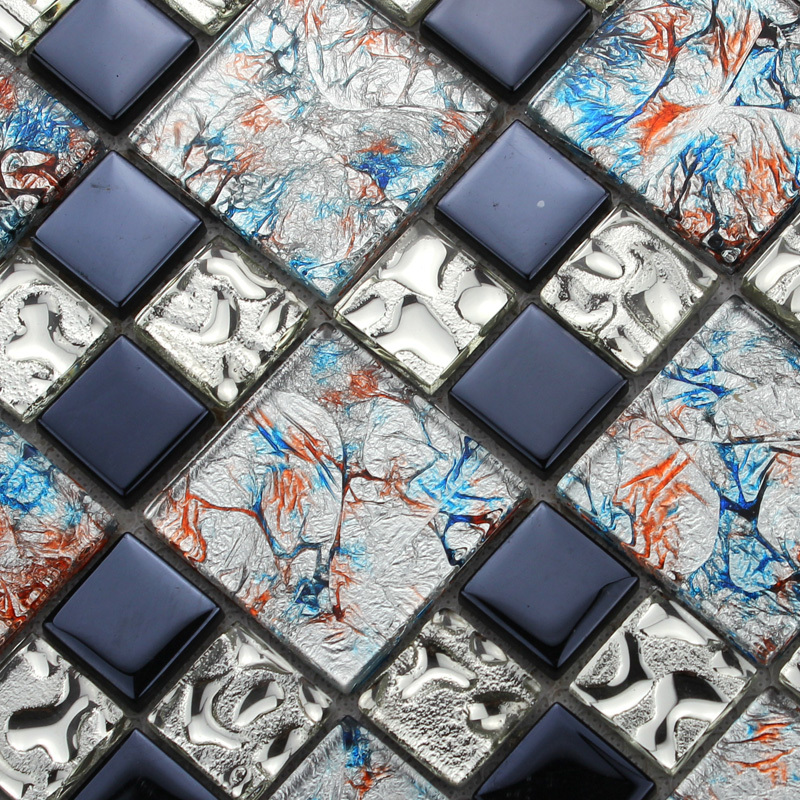

Working from the center outward, continue laying stones as described in step 7.Again, use your fingers to pack the mix tightly around them.Ĩ. Set the second and third stones in place next to the first stone.Using the spade, dig shallow holes in the concrete mix next to the flat sides of the center stone.Lay Stones Alongside the Center Stone Photo by Kolin Smith Place the first stone on edge in the hole and pack concrete around it, holding it upright with your fingers.ħ.Starting in the center, use a garden spade to dig a shallow hole in the damp concrete mix.(Later, when all the stones are in place, you'll add a finer topping mix between the joints see step 10.)

To make the mosaic sturdy, first bury the bottom third of the stones in the concrete mix.Place the Center Stones Photo by Kolin Smith Tip: One bag of concrete mix will be enough to create a mosaic that's about 10 square feet. Draw a second circle at half the radius for an additional visual guide. Push one nail into the center of the installation spot, pull the string taut, and draw a circle in the mix with the second nail.For a circular mosaic, tie a large nail to each end of a piece of string cut to the length of the circle's radius.Mark the Mosaic's Shape Photo by Kolin Smith Using a garden sprayer or a hose with a fine-mist attachment, lightly mist the concrete mix until its texture changes from a loose powder to a crumbly, dirt-like consistency.ĥ.Dampen the Concrete Mix Photo by Kolin Smith Pour dry concrete mix into the center of the installation spot, and use a 2x4 to screed the mix to an even 2-inch layer that extends 2 inches beyond the mosaic's footprint on all sides.Ĥ.Tamp 6 inches of paver base and a 1-inch layer of stone dust into the excavated area.(This will ensure proper drainage of the base and create enough space around the mosaic to add edging.) Dig out an area at least 1 foot larger than your mosaic on all sides to a depth of 6 to 8 inches.The mosaic should sit level with or slightly higher than the surrounding ground so that water won't collect on top of it take this into account when selecting your project site. Prep the Project Site Photo by Kolin Smith (We created a double- spiral pattern, with one set of stones laid perpendicular to the other.) When you're happy with your mosaic, take a photo of it and note its size and shape for later reference.ģ. Don't lay all the stones parallel, though-varying their direction will keep them from shifting out of place. The stones should be packed together tightly, with parallel stones touching each other in their middles. Lay the stones upright in the sand in a pattern and shape you like the sand will hold the stones in place as you work.Spread the sand to a depth of 3 inches in a sandbox made from scrap plywood or on a plastic tarp or sheeting.Rinse off dirt and grit, then sort stones of similar color and size into piles or buckets.Ģ. Spread out the stones near your project area.Prep and Sort the Stones Photo by Kolin Smith
Mosaic crack how to#
Sunday: Grout the stones into place How to Make a Pebble Mosaic 1. Saturday: Lay the base, set the stones, and let the concrete begin to cure Pebble Mosaic Overview Illustration by Gregory Nemecįriday: Sort the stones and lay out the pattern

"Just be sure to lay the stones on edge for added strength and stability," he says. This Old House senior technical editor Mark Powers used 2- and 3-inch polished stones from Stone Decorative to create this spiral-pattern mosaic, which can be scaled up or down depending on the size of your site and the stones you select. Though the materials to build it are pretty basic-flat pebbles or cobbles from a stone yard (or ordered online) concrete mix, gravel, and stone dust for the base-your design can be anything but. If you're looking for an outdoor project that's a bit off the beaten path, a pebble mosaic will give your yard, garden, or walkway a unique and unexpected focal point.


 0 kommentar(er)
0 kommentar(er)
